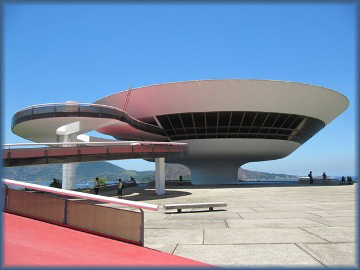 |
 |
CITIES & LODGING
| Rio de Janeiro |
 Rio
de Janeiro is the second largest city in Brazil, with over 5,750,000
inhabitants, on the South Atlantic coast. Famous for its breathtaking
landscape, its laidback beach culture and its annual carnival, Rio de
Janeiro is the country’s cultural capital and "emotional" capital. Rio
de Janeiro is the second largest city in Brazil, with over 5,750,000
inhabitants, on the South Atlantic coast. Famous for its breathtaking
landscape, its laidback beach culture and its annual carnival, Rio de
Janeiro is the country’s cultural capital and "emotional" capital. Its harbor is comprised of a unique entry from the ocean that makes it appear as the mouth of a river. Rio de Janeiro, was discovered on the 1st of January 1502 by Portuguese navigators who mistook the entrance of Guanabara Bay for the mouth of a river. The Portuguese crown established the city of Sao Sebastiao do Rio de Janeiro. After 2 years of bloody conflict with the French, settlers began to cultivate the surrounding fertile lands. At the beginning of the 18th century the city's importance and  population increased immensely when it
became the main shipping port for gold and diamonds that came from Minas Gerais. population increased immensely when it
became the main shipping port for gold and diamonds that came from Minas Gerais.
In 1763 the colonial capital of Brazil was transferred from Salvador da Bahia to Rio de Janeiro. In 1808, as Napoleon's armies began their invasion of Portugal, the decision was made to transfer the Portuguese monarch and his court to Rio de Janeiro, where he would remain until 1821. During this time Brazil was elevated in status from a colony to an United Kingdom with Portugal. With the advent of Independence, Rio became the capital of the new empire. The city prospered economically, and by 1891 it had a population of over 500,000 inhabitants ranking it one of the largest cities in the world at the time. As the city grew in prominence, mountains were removed, bay water reclaimed, and skyscrapers constructed. |
|||||
 With
the inauguration of Brasilia in 1960, Rio de Janeiro ceased to be Brazil's
capital. As the former capital of Brazil, Rio has a remarkable architectural
heritage, some of the country's best museums and galleries, superb
restaurants and a vibrant nightlife – in addition to its legendary beaches. With
the inauguration of Brasilia in 1960, Rio de Janeiro ceased to be Brazil's
capital. As the former capital of Brazil, Rio has a remarkable architectural
heritage, some of the country's best museums and galleries, superb
restaurants and a vibrant nightlife – in addition to its legendary beaches.Rio de Janeiro has a majestic beauty, with built-up areas nestled between a magnificent bay and dazzling beaches on one side and an abruptly rising mountain range, covered by a luxuriant tropical forest, on the other. The mountainous areas includes Sugar Loaf mountain at 395 m (1,296 feet), Corcovado Peak at 704 m (2,310 feet), and the hills of Tijuca at 1,021 m (3,350 feet). This unique landscape makes Rio de Janeiro one of the most beautiful cities in the world, justifying its title of "Marvelous City" (Cidade Maravilhosa) and makes the harbor one of the Seven Natural Wonders of the World. |
|||||
 Rio's
cultural life is intense and varied. Perhaps at no time is the city's
festive reputation better displayed than during the annual carnival which
enlivens the city for 3 solid days with music, singing, parties, balls, and
street parades of brilliantly-costumed dancers performing the samba. Rio's
cultural life is intense and varied. Perhaps at no time is the city's
festive reputation better displayed than during the annual carnival which
enlivens the city for 3 solid days with music, singing, parties, balls, and
street parades of brilliantly-costumed dancers performing the samba. Economically, Rio is a service industry center, a key financial center, and the producer of food products, building materials, electrical equipment, chemicals, pharmaceuticals, beverages, and textiles. Yet its tourism industry continues to thrive. With its world famous beaches, such as, Copacabana and Ipanema, its splendid bay, one of the loveliest in the world, and its wonderful climate, a blend of summer and springtime, Rio de Janeiro is a city that lives in and for the sun. |
|||||
 |
 |
 |
 |
||
| About | Help | Countries | Social | Language | More |
|
|
|
|
|
|
Copyright
© 2004-16 NIK|LAS. All rights reserved.
Privacy Policy -
Site Map |